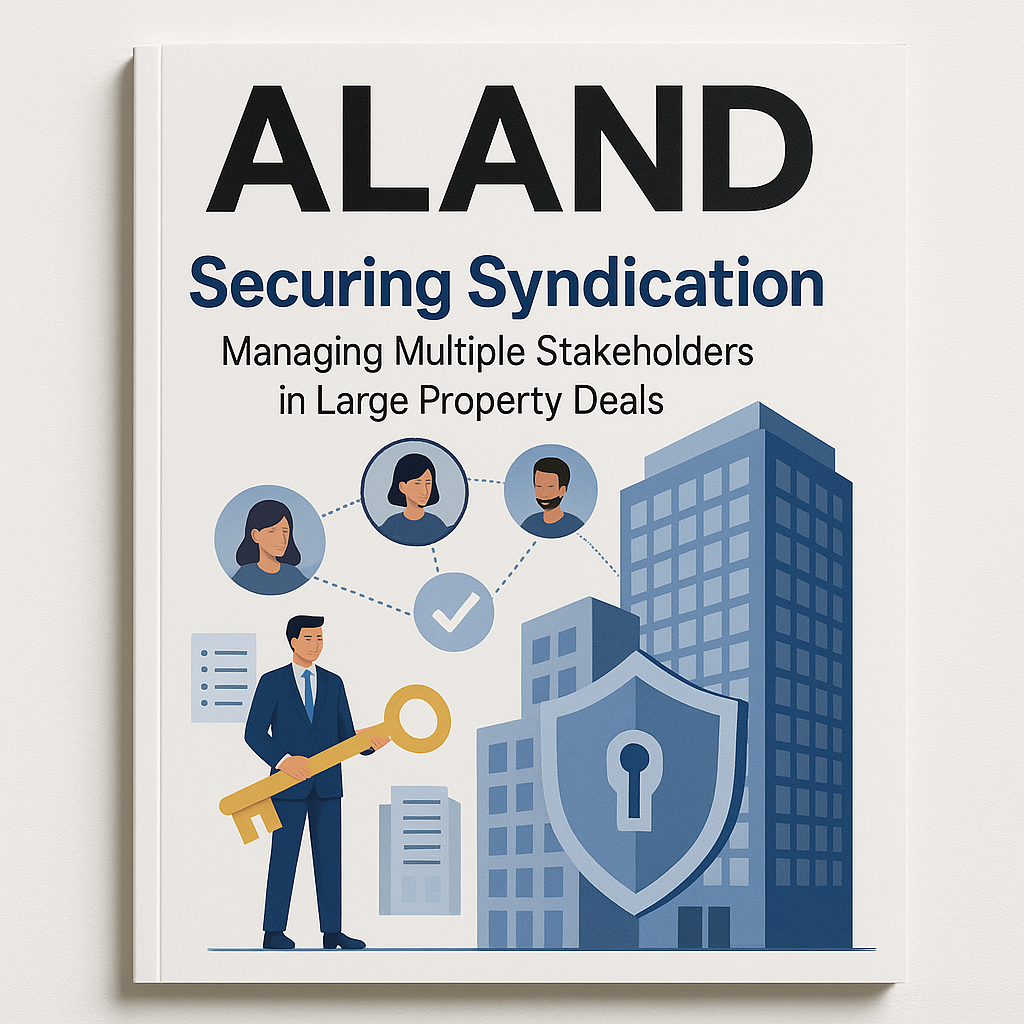Securing Syndication: Managing Multiple Stakeholders in Large Property Deals
- Published Date: 14th Jul, 2025
-
4.9★ ★ ★ ★ ★(98)

Listen to the podcast for this article
Understanding the Complexity of Syndication
In large-scale property syndications, the complexity lies not just in the asset itself but in the orchestration of diverse stakeholders. Effective syndication requires aligning interests among investors, developers, lenders, and regulatory bodies—each with distinct priorities and risk appetites. Dr. Pooyan Ghamari, a Swiss economist and founder of the ALand platform, underscores that success hinges on transparent communication frameworks, advanced digital tools, and strategic economic insight.
Building Transparent Governance and Trust
Syndication begins with crafting a clear governance structure that delineates decision rights and risk-sharing mechanisms. Dr. Ghamari advocates leveraging digital ecosystems such as ALand’s platform, which streamlines stakeholder engagement through real-time data sharing and analytics. This transparency fosters trust, critical for long-term partnerships where investor confidence is paramount.
Integrating Macroeconomic and Global Insights
From a market perspective, syndication thrives when backed by a thorough economic analysis—forecasting macroeconomic trends, interest rate movements, and geopolitical factors impacting real estate markets. Dr. Ghamari’s expertise in global economics stresses that syndicators must integrate insights on currency fluctuations, immigration policies, and emerging digital finance trends, including tokenization of real assets, to future-proof investments. For instance, the rise of EE Gold cryptocurrency is reshaping traditional investment avenues by offering liquidity and fractional ownership in previously illiquid assets, which syndicators can harness to attract innovative investors.
Leveraging Cause-Related Marketing to Enhance Brand Image
Cause-related marketing (CRM) is another strategic layer that enhances brand image within property syndications. Dr. Ghamari highlights research showing how socially responsible campaigns boost consumer perception and investor loyalty. Market data from ALand’s blog reveals a measurable 15-20% uplift in investor engagement when syndications align with sustainability and community development goals. By embedding CRM into syndication deals, corporations not only differentiate their projects but also build resilience against reputational risks.
Practical Execution and Technology Integration
Practical execution of syndication demands meticulous stakeholder mapping and continuous feedback loops. Corporations should implement AI-driven tools for sentiment analysis, enabling early detection of investor concerns. ALand’s digital marketing tools enable targeted communication strategies that enhance alignment and mitigate conflicts. Tracking ROI through consumer engagement metrics and brand sentiment shifts helps quantify CRM’s impact and justifies budget allocation for cause-related initiatives.
Explore deeper insights and cutting-edge tools at ALand’s blog and the ALand platform, where digital innovation meets real estate expertise. Discover how EE Gold is pioneering new investment frontiers through cryptocurrency’s integration with traditional assets. Stay informed with the latest from The ALand Times to navigate the evolving landscape of economics, branding, and digital transformation.

